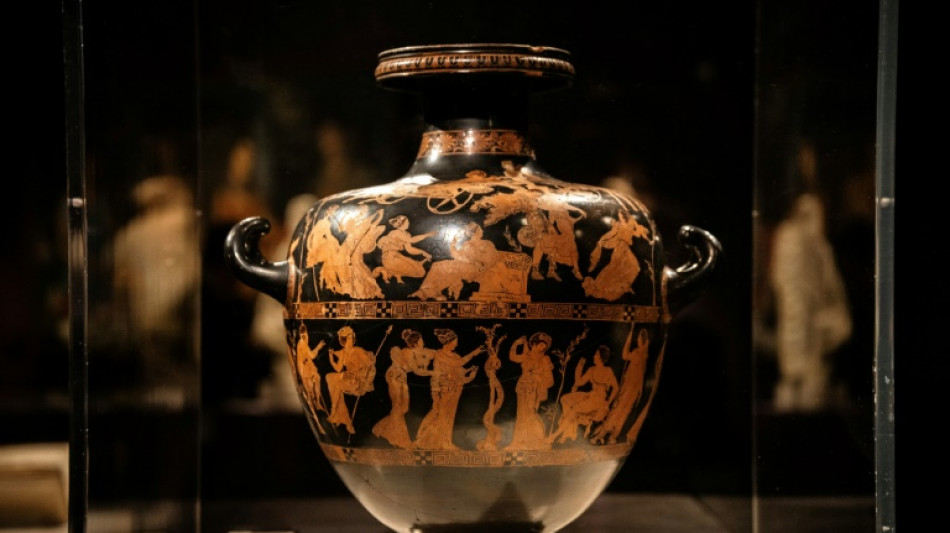

Greece showcases British Museum vase in rare loan
A 2,500-year-old Greek vase that has never left the British Museum in 250 years went on display at the Acropolis Museum in Athens this week, organisers said on Tuesday.
But Acropolis Museum general director Nikolaos Stampolidis insisted that the four-month loan has no bearing on ongoing talks between Athens and London on the fate of the Parthenon Marbles, which were at the centre of a diplomatic spat between the two countries last week.
"Exhibition loans are one thing, and the Parthenon Marbles are another," he told reporters.
Those sculptures were removed from the Parthenon temple at the Acropolis in Greece in the early 19th century by British diplomat Thomas Bruce, the earl of Elgin.
Athens maintains the marbles were stolen, which Britain denies, and the issue has been a source of contention between the countries for decades.
"We want the sculptures to return here forever," Stampolidis said.
A row broke out over the Marbles last week after British Prime Minister Rishi Sunak at the last minute cancelled a meeting with visiting Greek counterpart Kyriakos Mitsotakis.
Downing Street accused Mitsotakis of having broken a promise not to use the meeting as a "public platform" to discuss the sculptures.
Dubbed 'history's most famous pot' by the British Museum, the Meidias hydria, or painted water jug, is believed to date from 420 BC, around a decade after the completion of the Parthenon in Athens.
Created by the Athenian potter Meidias, it was excavated in Italy and acquired by Sir William Hamilton, British ambassador to the Kingdom of Naples. Hamilton sold it to the British Museum in 1772.
The vase is part of a collection of 165 works of art -- including coins, ceramics, vases, sculptures, mosaics, manuscripts, porcelains and paintings -- on display in the exhibition.
They include pieces from some of Europe's top museums, half of which had never left their museums until now, Stampolidis, a specialist in early Greek history, told reporters.
Titled Noemata, or Meanings, the exhibition explores the way Greek artists depicted abstract ideas such as love, health and time, from antiquity to the modern era.
It will be officially inaugurated on Thursday and run until April 14.
The Meidias hydria subsequently will be displayed at the Louvre in Paris as part of an exhibition linked to the Olympic Games, which begin in the French capital in July.
A.Goretti--IM



